Panasonic Lumix DMC-FX100 Review
Panasonic Lumix DMC-FX100
When one manufacturer makes a 12-megapixel compact camera, everyone else has to make one too.
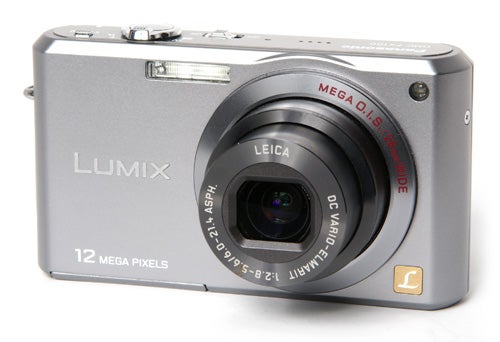
Verdict
Key Specifications
- Review Price: £200.00
I’ve already reviewed several of the current 12-megapixel compact cameras, including the Kodak EasyShare Z1275, the Casio Exilim EX-Z1200 and the Sony Cyber-shot DSC-W200, so today it’s the turn of Panasonic’s take on the concept, the Lumix DMC-FX100, which was in fact the first 12MP compact on the market, launched as it was in May of this year. Despite my misgivings about the potential problems of cramming so many photoreceptors onto a compact camera sensor, I have to admit that although the Kodak did have a number of problems, overall they’ve not been as bad as I’d feared.

The FX100 is a smallish compact camera bearing a strong family resemblance to other recent Panasonic compacts such as the FX33. However the styling of the FX100’s body is somehow harder, with bevelled edges and a slightly thicker and squarer shape. It has the same Leica-branded 3.6x zoom f2.8 – f5.6 lens as the FX33, with a wide-angle end equivalent to 28mm, considerably wider than most cameras from other brands. It also has the same 2.5-inch, 207k LCD monitor, and a very similar range of features. It’s also not far off the same price as the FX33 either. It is currently available for around £200, just £10 more expensive than its slimmer sibling. However it is also £30 more than the Casio EX-Z1200 and £20 more than the Sony DSC-W200.
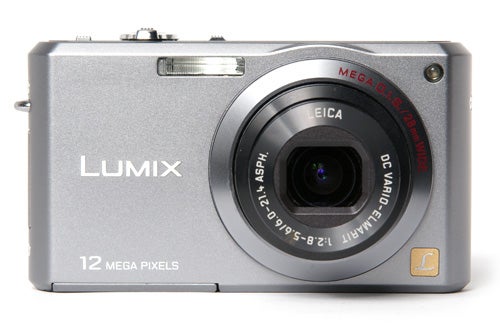
Panasonic enjoys an enviable reputation for its digital cameras, thanks to a number of very high quality models featuring Leica lenses. However it has also produced some distinctly second-rate models, and even its best ones are persistently dogged by image noise problems, both of which facts seem to get overlooked. I suspect that the main reason is that the name “Leica” tends to produce a Pavlovian reaction in most photography journalists similar to the reverence for names such as “Porsche” or “Ferrari” exhibited by motoring writers. The very idea that anything associated with that name can be anything less than perfect is tantamount to heresy. There’s no doubt that the Leica-branded lenses used on many Panasonic cameras are very good indeed, but they are manufactured in a factory in Japan, not hand-made by Geppetto-like craftsmen in Wetzlar.
Not that there’s anything wrong with that of course. The build quality of the FX100 is of a very high standard, with a strong metal body finished in an attractive gunmetal grey (it is also available in black). Measuring 96.7 x 54.0 x 24.5 mm and weighing 148g it’s not quite an ultra-compact, but it is small and light enough to slip into a pocket for a night out. The layout of the controls is very simple, with Panasonic’s usual slider switch for on/off, a rotary bezel around the shutter button for zoom control, and a small, recessed knurled wheel for mode selection. As with previous Panasonic cameras this is rather fiddly, and the icons representing the shooting modes are small and hard to see. The fact that you can’t see the whole wheel means that until you get used to it you will frequently turn it the wrong way trying to find the mode you want, despite the on-screen display The open mode dial found on other manufacturer’s cameras is a much better idea. The modes on offer are fairly limited, but then the FX100 is a fairly basic camera, apart from its exceptional resolution. You get a “Simple” mode, in which all but the most basic menu functions are disabled, a normal Auto mode, with all options available, and an Intelligent ISO mode, which is really just another type of auto. As well as this there is a Scene mode, with 21 scene programs covering all the usual scenarios.
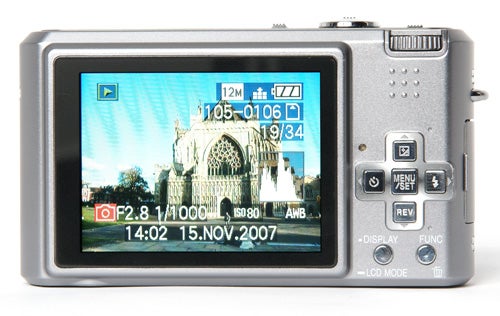
There is an extra button on the top of the FX100, labelled “E. Zoom”. When pressed once it instantly moves the zoom lens to its maximum telephoto position, which could be handy, however when pressed it again and it activates a feature which Panasonic like to call “Extra Optical Zoom”. Don’t be deceived though, this is just another name for the dreaded digital zoom. At a recent launch event, a Panasonic representative tried to convince me that actually it’s not digital zoom at all, but it operates by enlarging the centre area of the sensor, which is exactly the definition of digital zoom. Yes, you get extra magnification, but at the price of greatly reduced image quality. Quite why an otherwise reputable company like Panasonic would try to pull the wool over it’s customers’ eyes in this way is hard to understand, but then I don’t understand why camera manufacturers insist on including digital zoom as a feature anyway.
On the back panel, the usual D-pad has been replaced with five small square buttons in a cross formation. These are finished in chrome with their icons engraved, which looks very nice in good light but does mean that in lower light the icons are impossible to see. Fortunately the functions are very basic, with only one per button, so remembering which button does what shouldn’t be too hard.
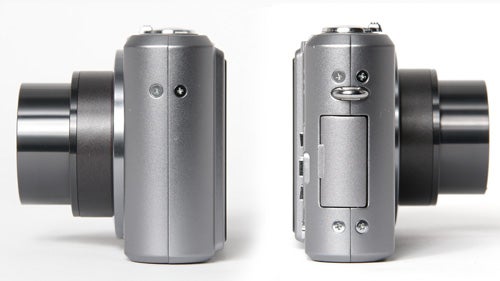
The FX100’s monitor is something of a weak point. It is bright enough to use in bright sunlight, and at 207k pixels it is sharp enough to check your focusing, but it has an extremely restricted angle of view, especially in the vertical plane. I tried using the camera to photograph a band on stage, holding the camera over the heads of the people in front of me, but I found that it was impossible to see what was on the monitor at any angle greater than about 45 degrees. This also makes it difficult to show your photos to more than one person at once.
In terms of performance, the FX100 comfortably above average. It starts up in just under three seconds, which is fairly quick, and shuts down again in just over two seconds. In single-shot mode it can take a photo every 1.5 seconds, which is faster than most, while in continuous mode it shoots at a very brisk 0.7 seconds per shot. It also has a burst mode which can shoot three frames in about 1.5 seconds. The autofocus system is exceptionally fast and generally accurate, although in wide-area mode I did find that it had a tendency to focus on the background rather than the foreground subject, especially at close range. However it operates extremely well in low light, focusing in a dimly-lit bar with no appreciable delay. It has an AF assist lamp, so it can focus in darkness at a range of several metres.
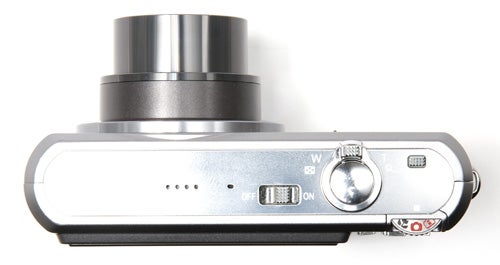
The 12-megapixel sensor produces large image files. In the highest quality setting, file sizes average about 5MB each, which indicates quite a low compression setting. This is great for picture quality, but it does mean that a 1GB memory card is only enough storage for 163 shots. The lower quality setting increases this to 324 shots, but if you’re going to go to the expense of buying a 12MP camera, surely you want to get the best possible quality out of it. One area of performance where the FX100 does stand out is battery duration. It is powered by a large 1150mAh Li-ion battery, one of the highest capacities I’ve ever seen in a compact camera. Panasonic claim 320 shots on a full charge, and I have no reason to doubt this.
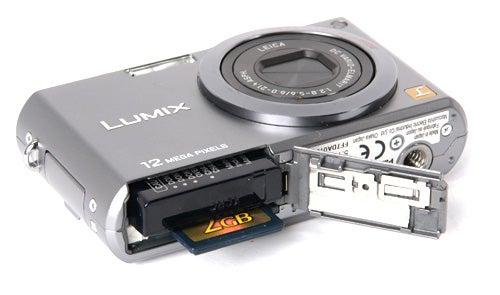
As always, we finally come to the crunch; picture quality. Here there is both good news and bad. The good news is that the combination of a 12MP sensor and a very high quality lens produces some of the most detailed shots I’ve ever seen from a compact, rivalling the performance of some digital SLRs. The bad news is that Panasonic still hasn’t managed to crack its recurring image noise problem, and here the 12MP sensor just makes it worse. There is image noise visible in shots even at the minimum setting of 80 ISO, and at 400 ISO it is bad enough to cause serious colour rendition problems. The noise reduction is quite heavy-handed, reducing fine detail in many shots. This can be adjusted in the menu, but turning it down just means that the shot gets even more noisy. As well as this, there is a general lack of dynamic range, with both burned out highlights and murky shadows on many shots. Under ideal conditions, the FX100 is capable of producing good images, with excellent colour reproduction and loads of detail, and the 28mm wide angle end is genuinely useful, but the extra resolution just isn’t worth the reduction in versatility. My advice? If you want a Panasonic compact, buy an FX33 instead.
”’Verdict”’
The Panasonic Lumix FX100 is a difficult camera. While it has excellent build quality, good performance and an exceptionally fine lens, its usefulness is limited by image noise problems. As it is it is hard to recommend it over the slightly cheaper FX33 (or even the FX55), which has a very similar range of features, better image quality and a lower price.
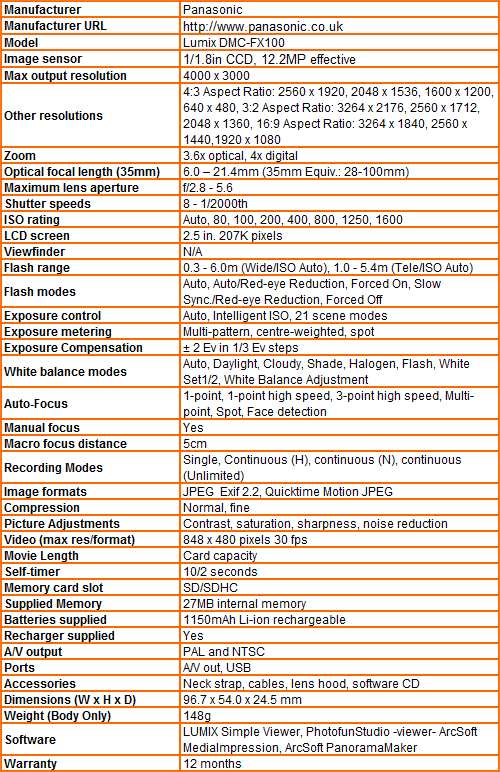
”Over the next few pages we show a range of test shots. On this page the full size image at the minimum and maximum ISO settings have been reduced to let you see the full image, and a series of full resolution crops have taken from original images at a range of ISO settings to show the overall image quality.”
—-
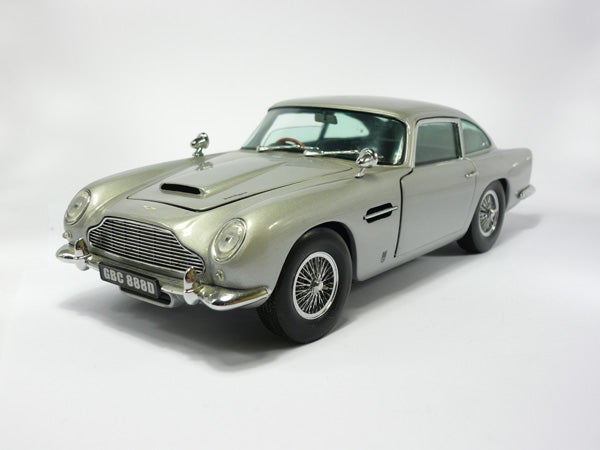
I got bored with the Jag, so here’s a DB5. This is the full-frame at 80 ISO.
—-
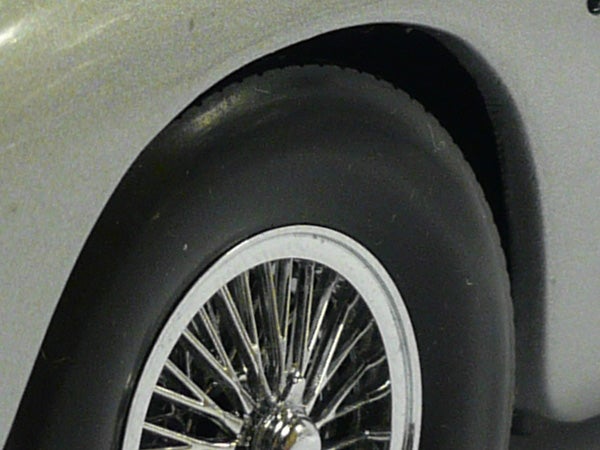
Even at the lowest ISO setting there is image noise visible.
—-
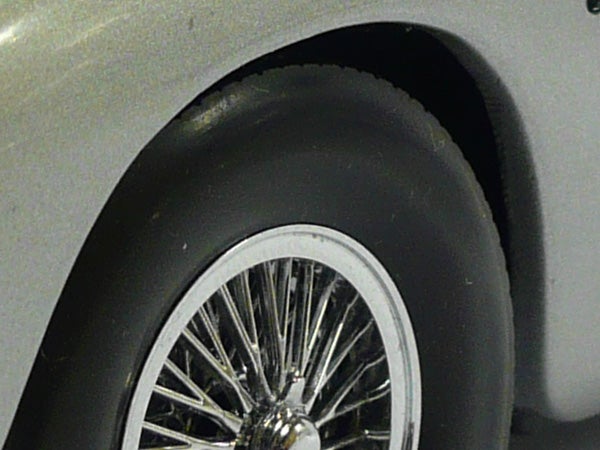
Up 1/3EV at 100 ISO and the results are much the same.
—-
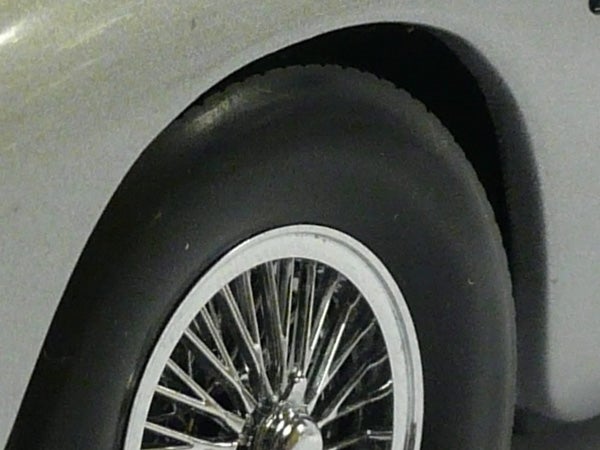
Slightly more noise at 200 ISO.
—-
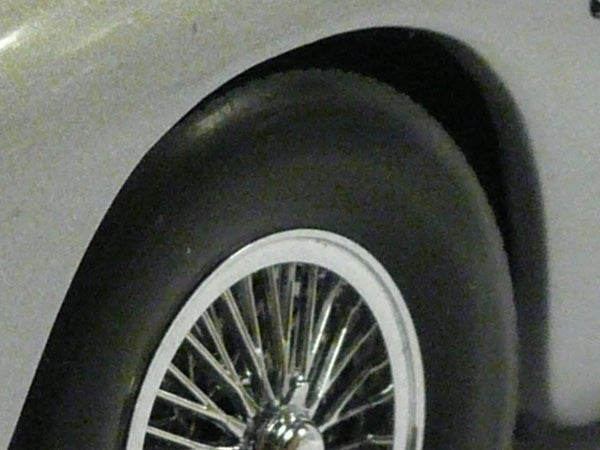
At 400 ISO the aggressive noise reduction has removed a lot of fine detail.
—-
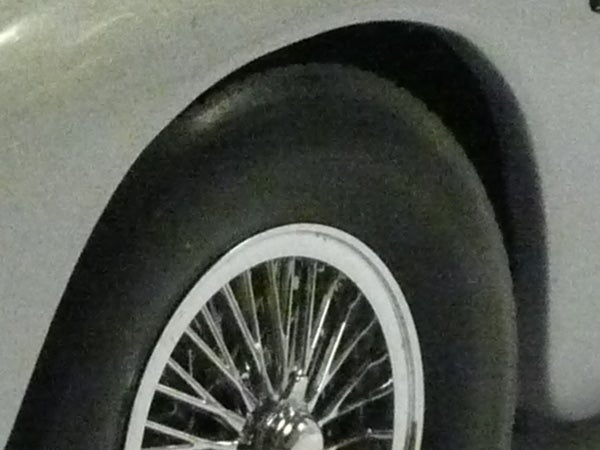
Image quality is reduced still further at 800 ISO.
—-
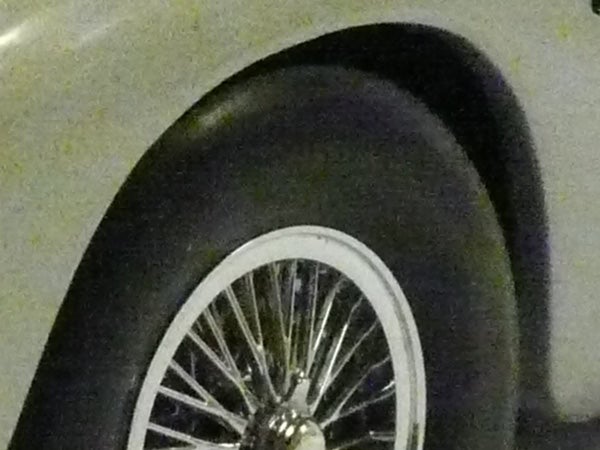
At 1250 ISO there are major colour problems.
—-
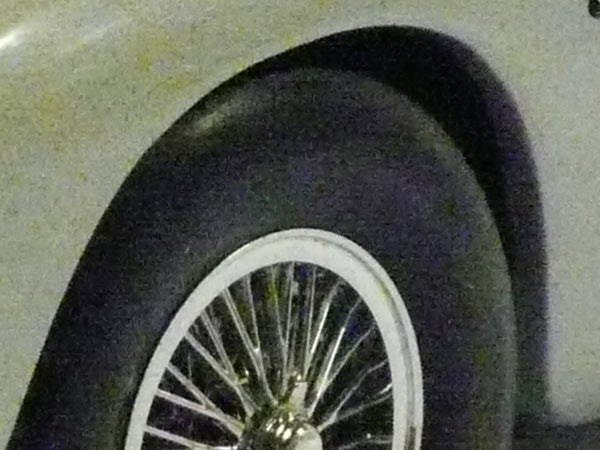
At the maximum 1600 ISO the image quality is very poor.
—-
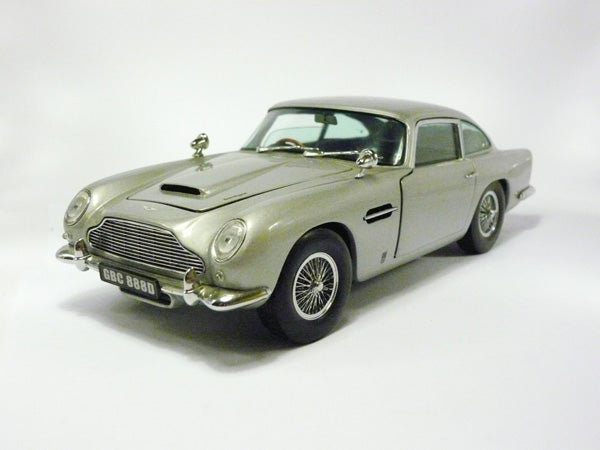
This is the full frame at 1600 ISO.
—-
”A range of general test shots are shown over the next two pages. In some cases, the full size image has been reduced for bandwidth purposes, and a crop taken from the original full resolution image has been placed below it to show the overall image quality.”
—-
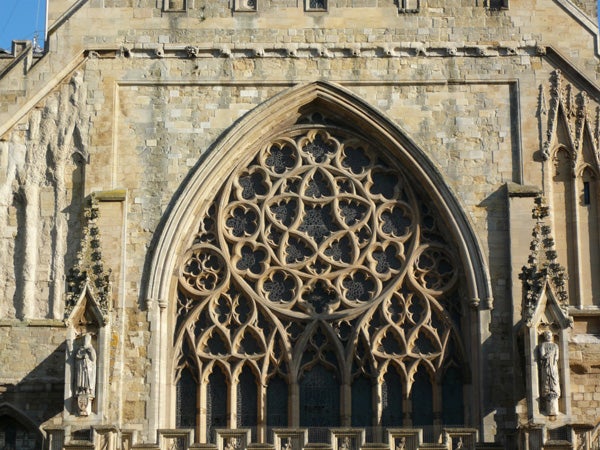
Here’s my usual detail test shot of the West Window of Exeter Cathedral, for you to compare with other cameras. Unfortunately the full-size shot is over our 5MB download limit, so you’ll have to compare the crop below.
—-
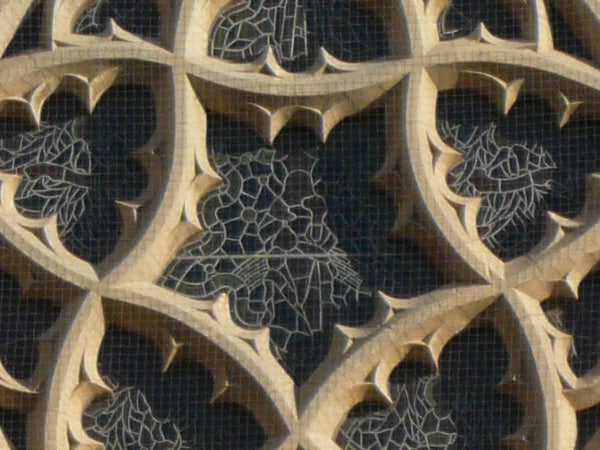
The 12MP sensor and high quality lens produce an impressive amount of fine detail.
—-
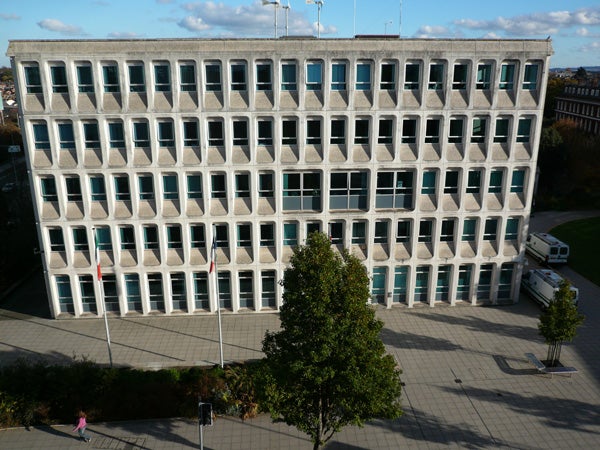
At the wide-angle setting there is very little barrel distortion, another benefit of the superior lens.
—-
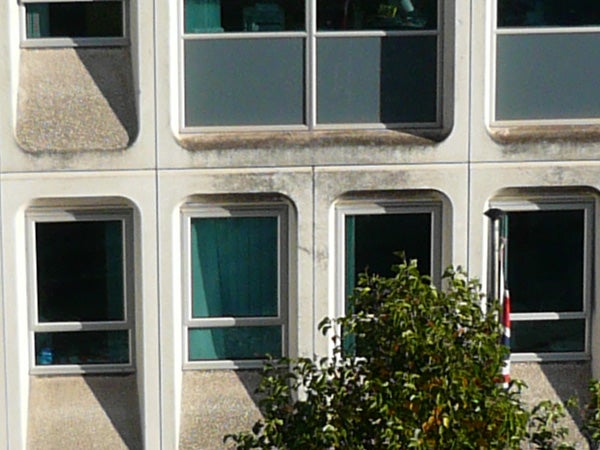
Pin-sharp detail at the centre of the frame.
—-
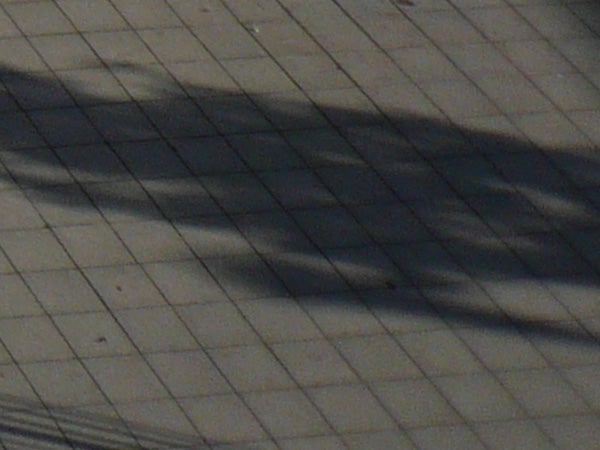
Corner sharpness is also very good.
—-
”A range of general test shots are shown over the next two pages. In some cases, the full size image has been reduced for bandwidth purposes, and a crop taken from the original full resolution image has been placed below it to show the overall image quality.”
—-
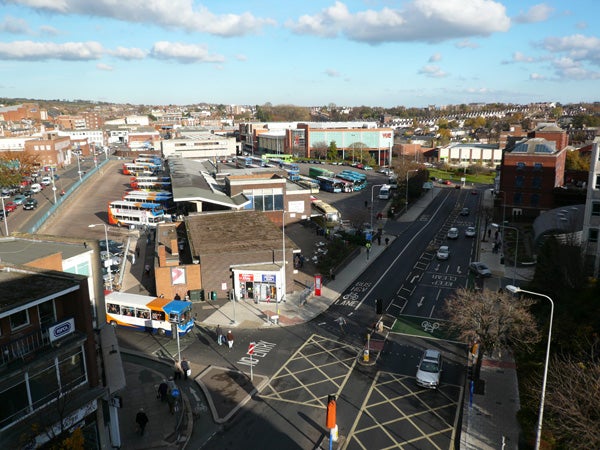
The wide-angle end of the zoom is equivalent to 28mm, a lot wider than most comapacts, and great for panoramic shots. Again, there is no full-size download available due to file size limits.
—-
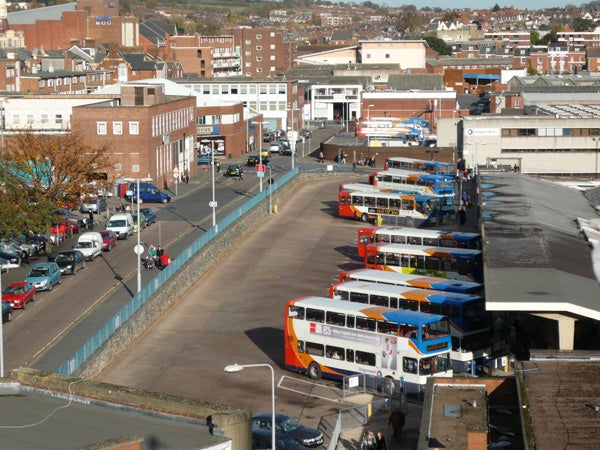
The telephoto end of the zoom is equivalent to 100mm.
—-
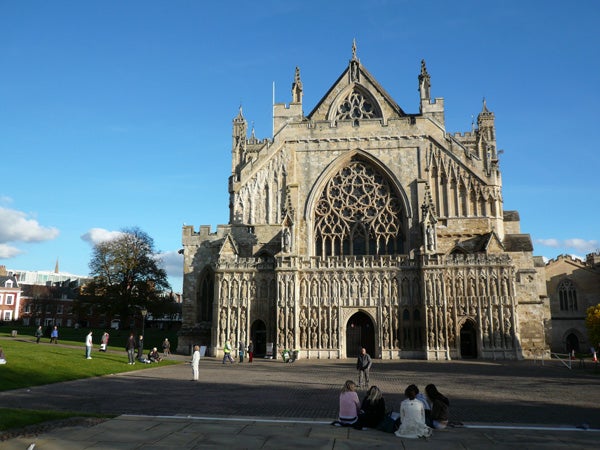
In good light the colour reproduction is excellent, but the shadows are a bit murky.
—-
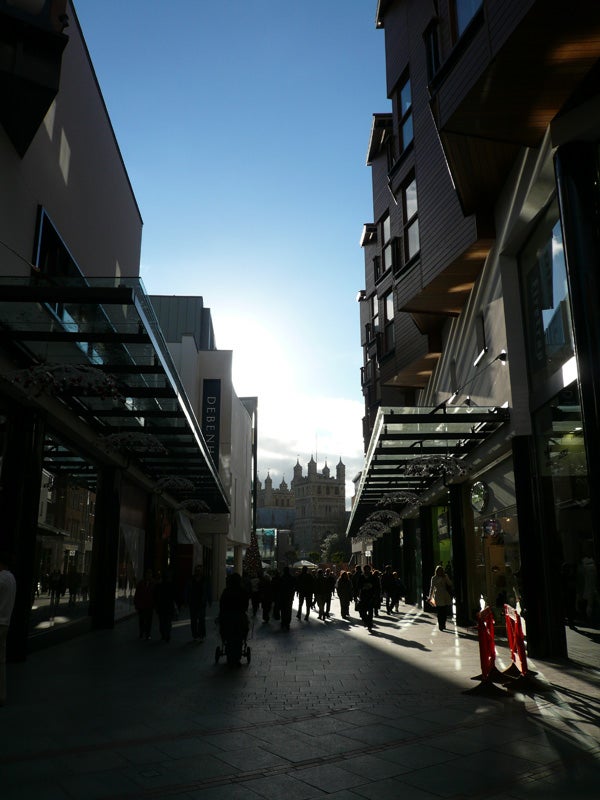
Again, a lack of shadow detail in this high-contrast shot, due to limited dynamic range.
—-

Low-light focusing is very quick and accurate, and flash exposure and frame coverage is excellent.
—-
Trusted Score
Score in detail
-
Value 5
-
Image Quality 7
Features
| Camera type | Digital Compact |
| Megapixels (Megapixel) | 12.2 Megapixel |
| Optical Zoom (Times) | 3.6x |
| Image Sensor | CCD |
| Image Stabilisation | Optical |
| LCD Monitor | 2.5 in |
| Flash modes | Auto Flash, Red-eye Reduction |
| Video (max res/format) | 1280 x 720 |
| Memory card slot | Secure Digital (SD) Card, MultiMediaCard (MMC) |

